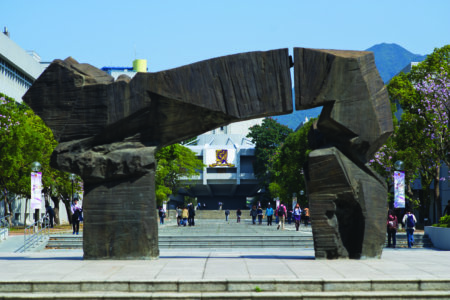
When you think of the term studying abroad, countries such as the US, UK and Europe are usually the first to come to mind. However, this is slowly changing. Asian universities are slowly climbing the ranks and becoming top contenders in study-abroad destinations for international students.
Over the last few years, the higher education sector in Asia experienced rapid growth. There are the usual contenders, of course. Singapore is home to one of the fastest-growing universities in the world, the National University of Singapore. Peking University in Beijing, China, is a fierce competitor in this regard, as well.
Still, other universities in Asia are catching up. Recent reports have shown that China has surpassed the US in the number of universities on the ranking of the world’s best universities for the first time ever. 280 out of 2,000 schools from more than 90 countries around the world on this Global Universities Ranking report are Chinese.
This is a considerable climb for Chinese institutions. Back in 2016, there were only two universities from China that made it to the world’s top 200 list. Since then, however, this number has more than doubled, with seven universities on the list.
That’s not to distract from other non-Chinese universities. Two Bangladeshi universities have made it to the infamous QS World Rankings list — speaking of their prestige and standing on the global stage. Many other ASEAN institutions have topped the Times Higher Education (THE) World University Rankings 2023.
The natural result of this, of course, is more international students choosing to attend an Asian university. The top 10 Asian universities which have attracted the highest number of international students are based in Hong Kong, Singapore, China and Malaysia.
International students currently make up 43% of the community at the University of Hong Kong (HKU) — earning it the title of “most international university” by THE. The Hong Kong University of Science and Technology (HKUST) is only slightly behind, with 28% of its students coming from outside Hong Kong.
Coupled with the fact that Asia, as the world’s largest continent, is rich in history, culture and beauty, the region could soon become the largest import of international students, threatening the US and UK which are currently at the top of the list.
Here are a number of reasons why students are choosing an Asian university over others.
Why an Asian university education is becoming a top choice for international students:

Asia not only offers cheap tuition fees but a low living cost as well. Farshad Usyan / AFP
Low cost of tuition and living
A common thought when studying abroad is that it is going to be expensive. However, that doesn’t have to be the case — especially when studying in Asia.
Home to some of the cheapest universities, in some Asian countries you can receive a great education while also having a great experience for as low as USD $2,900 a year. In the west, tuition fees are much higher, with this amount barely covering the cost of one academic year.
When taking into consideration both the cost of tuition fees and the cost of living, Taiwan reigns supreme. Universities in Taiwan tend to charge a low annual tuition fee of $4,050 and an average living cost of about $2,900 a year, making it one of the cheapest countries to study abroad.
Don’t worry — the low price doesn’t mean low quality. Taiwan currently has 43 entrants in the latest Asian university rankings, with five places in the top 50. The highest-ranked institution is the National Taiwan University (NTU) which is ranked 19th.
Read on to find out more about Asian university rankings.
View this post on Instagram
Many high-ranked universities
The literacy rate in Asia has risen over the years, and many Asian students are consistently scoring outstandingly well in international examinations. This is a result of an excellent education system that can be seen in many Asian countries, including Japan, South Korea, China, Singapore and Malaysia.
For example, Seoul National University was ranked 54th this year in the Times Higher Education World Rankings, performing well in research and teaching methods. Besides that, the National University of Singapore was ranked the 9th as the most innovative university in Asia according to Reuters. The University of Tokyo in Japan is ranked 23rd in the world by the QS University Rankings and 7th as the best student city by QS.
Despite common misconceptions, the majority of programmes conducted in Asian universities use English as their main medium of teaching.
Rich in history, culture and food
Asia has so much more to offer than just excellent higher education. From history to architecture, art, food and culture, there is so much for one to experience in Asia. Sandy beaches, high-rise buildings and beautiful, looming mountains — Asia has it all.
Every Asian country is rich with its own traditions, beliefs and customs, making for many opportunities for international students to immerse themselves in a new culture. On top of this, many studying in Asia take up the opportunity to master a foreign language, which sets them apart when searching for employment.
One of the main attractions in Asia is its food. There are many dishes that will not only make you drool, but are extremely pocket-friendly and affordable too. This is perfect for international students on a budget — and will help in widening your pallette, too.










